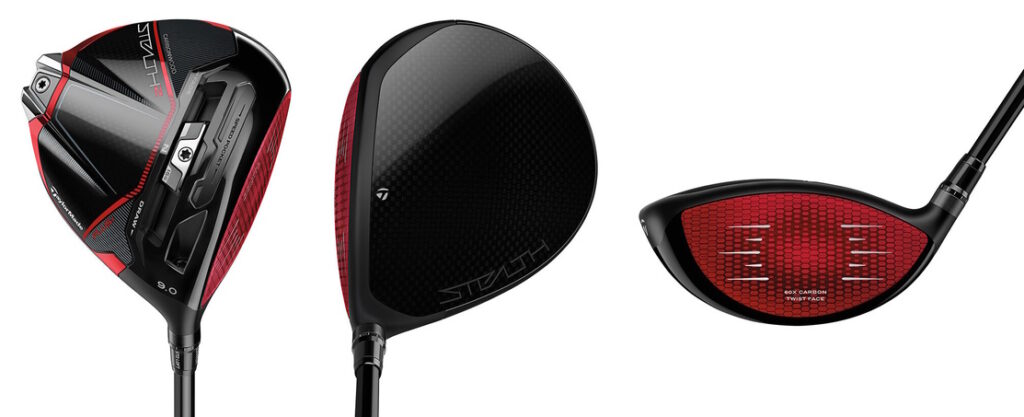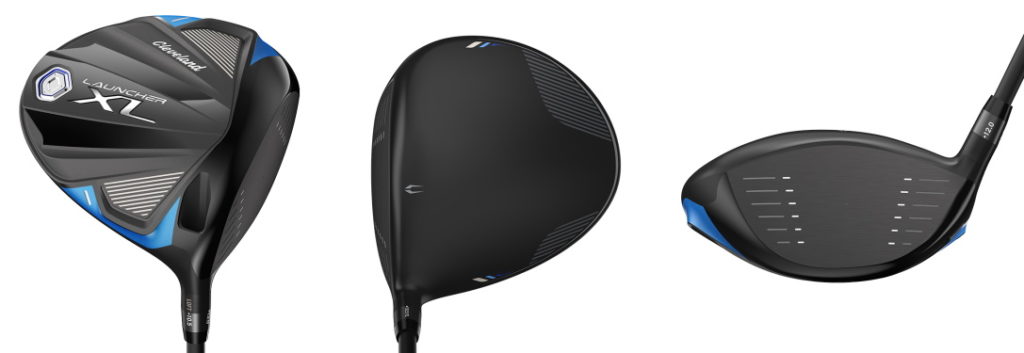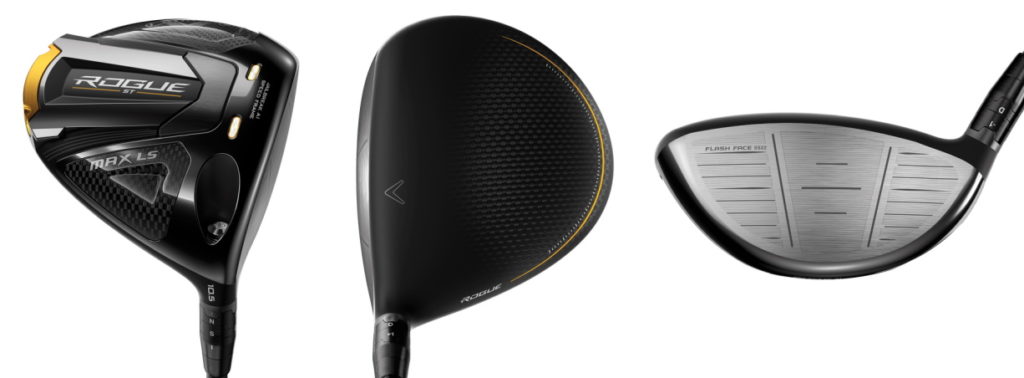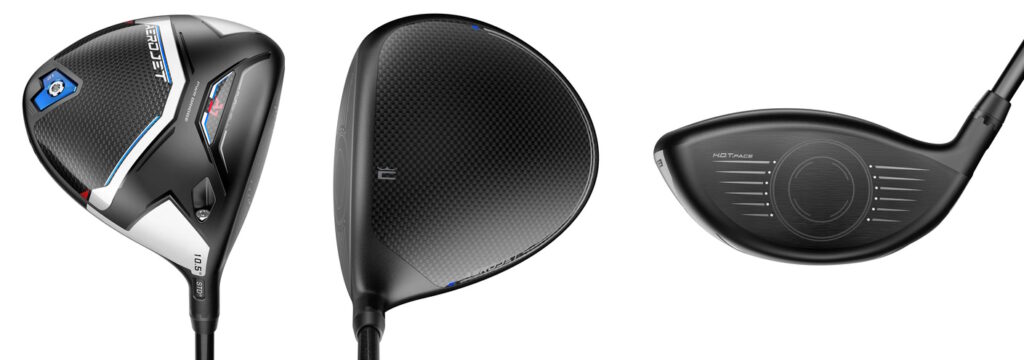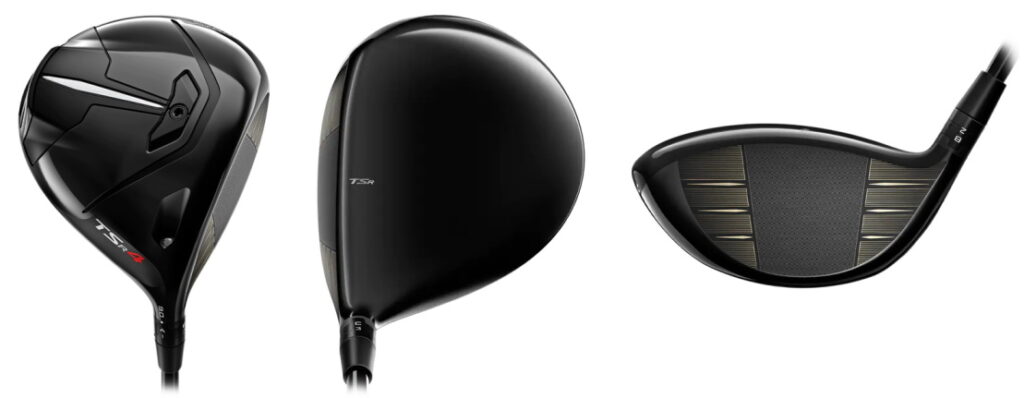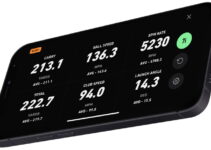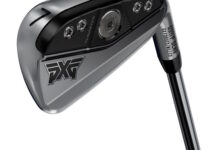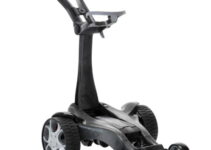Golfstead is reader-supported. When you buy through links on the site, we may earn an affiliate commission at no extra cost to you. Our affiliations include, but are not limited to, the eBay Partner Network and Amazon Associates.
Your ability to hit the ball solidly off the tee, send it a long way, and (hopefully) find the fairway is essential to your success as a golfer. It’s important to use a quality driver that suits your swing and your style of play.
Narrowing down a driver that would suit all mid handicappers isn’t easy since every player is different. However, you could say that a typical mid handicapper might have a driver swing speed of 88-98 mph and appreciate some combination of game improvement and better-player performance.
Whatever the case may be, there are countless options on the market, which can make the process of choosing the best driver for you feel difficult and overwhelming. Fortunately, you’ve come to the right place.
In this guide, we’ll review and compare our picks for the best golf drivers for mid handicappers across a range of different brands. These drivers may have been released for the most current golf season or any year prior.
Note: Golfstead has tested and/or conducted in-depth research into all of the products featured in this guide. Our editorial process for these rankings takes into account a mix of many factors which may include performance, reliability, usability, value for money, cost, and the general consensus from other users of the product. The list that follows may be reassessed or updated over time. We do not guarantee that other users will have the same or similar experience with the products as described on this page.
Our Top Picks For Drivers For Mid Handicappers
Based on our own testing, research, and experience, here are our top selections:
- TaylorMade Stealth 2 Plus Driver
- Callaway Paradym Driver
- Cleveland Launcher XL Driver
- PING G430 MAX Driver
- Mizuno ST-X 230 Driver
- Callaway Rogue ST MAX LS Driver
- Cobra AEROJET Driver
- Titleist TSR4 Driver
1. TaylorMade Stealth 2 Plus Driver
TaylorMade is a top golf equipment brand that has developed high-performing drivers for decades.
Their Stealth 2 Plus driver features the same improved Carbon Twist Face and carbon-focused construction of the standard Stealth 2, but it adds a 15g sliding weight track that, along with the FCT Loft Sleeve, can be used to dial in your preferred shot shape.
In addition to its versatility, the Stealth 2 Plus is also very long and forgiving with excellent feel, so mid handicappers get the whole package.
Key technologies are:
- New 60X Carbon Twist Face: ball speed and forgiveness on off-center strikes is improved with an enhanced version of Inverted Cone Technology (ICT), and the face is slightly lighter
- Carbon Reinforced Composite Ring: this runs around the head of the driver, allowing for weight savings that are used to shift the CG back for higher MOI
- Weight Track: a front sliding weight track with a 15g moveable weight allows you to adjust ball flight. Position the weight in the center for a neutral bias, towards the toe for a fade bias, or towards the heel for a draw bias.
- Internal Stiffening Ribs: used to finely tune acoustics for a lively and powerful sound
- Inertia Generator: seen in previous models including the M6, SIM and SIM2, this unique sole shape increases aerodynamic club head speed and shifts the CG back for increased stability
The stock shafts are the Project X HZRDUS Black (low launch, low spin) and Mitsubishi Kai’li Red (high launch, mid spin). The stock grip is the Golf Pride ZGRIP Plus2.
TaylorMade is also offering the MyStealth 2 Plus driver which allows you to select custom colours for the carbon face, composite ring and other components, as well as choose between a matte or gloss crown finish. This means you can create a driver that matches your unique style.
| Lofts | 8°, 9°, 10.5° |
| Lie | 54°-58° |
| Length | 45.75″ |
| Swing Weights | D4, D5 |
Pros
- longer and more forgiving than the Stealth Plus
- strong ball flight with sole adjustability
- feel is better than ever
- in the bag of some of the world’s best players
- MyStealth customization is a nice bonus option
- very workable
Cons
- spin and trajectory will be too low for some
- expensive
Final Thoughts
Not only is the Stealth 2 Plus faster off the face and longer than the original Stealth Plus, but it’s also more forgiving.
When you combine this with lower spin and a mid launch, penetrating ball flight, workability, and sole adjustability, you realize this driver pretty much has it all.
Having said that, an above-average clubhead speed is still a strong recommendation for those interested in gaming the Stealth 2 Plus. Mid handicappers who have trouble getting the ball sufficiently airborne should look at the standard model instead.
2. Callaway Paradym Driver
The Paradym is a new driver from Callaway that features a 360° carbon chassis, new A.I. Jailbreak system, and A.I. face.
This driver is built for high MOI, high launch, low spin, and adjustable perimeter weighting that will appeal to many mid handicappers. It has an excellent customer score of 4.8/5 (100% recommended) on the Callaway store and won a gold medal on the 2023 Golf Digest Hot List.
The key technologies of the Paradym driver are:
- 360° Carbon Chassis: consists of a Triaxial Carbon Crown and forged carbon sole, saving 44% more weight than a titanium chassis. The saved weight is redistributed to increase MOI (and thus forgiveness) and maximize distance.
- A.I. Jailbreak Speed Frame: 33% lighter than previous designs, it vertically and horizontally connects the crown and sole to produce more ball speed and torsional stability towards the heel and toe.
- A.I.-Designed Face: optimizes launch, spin and ball speeds, and also improves downrange dispersion for more accuracy.
- Face Cup: featured in a driver for the first time, it further boosts ball speeds at every impact point across the face.
- Forged Titanium Face: works with the Face Cup to increase COR and energy transfer to the ball beyond what you would get with a standard driver face insert.
- Adjustable Sole Weight: a sliding 15g weight at the back of the sole can be slid towards the heel for a draw bias, slid towards the toe for a fade bias, or kept in a neutral position.
The Paradym driver comes stock with the ALDILA ASCENT PL Blue 40, Project X HZRDUS Gen 4 Silver 50 & 60, Project X HZRDUS Gen 4 Black 60, and Fujikura Ventus TR Blue 6 shafts. The stock grip is the Golf Pride Tour Velvet 360.
| Lofts | 9°, 10.5°, 12° |
| Lie | 57° |
| Length | 45.75″ |
| Hands | RH/LH |
Pros
- does everything really well
- super fast face and big distance
- wonderful forgiveness across the face
- sliding weight boosts versatility
- outstanding looks
- signature Callaway feel
Cons
- limited performance gains over Rogue ST MAX means an upgrade may not be worth it
- some degradation of sound & feel low on the face
Final Thoughts
The Paradym driver should be seriously considered by mid handicappers who prefer Callaway clubs and want a similar level of versatility to TaylorMade’s Stealth 2 Plus.
With the very best in distance across the face, great feel, looks, and sole adjustability, there’s not much to criticize about this driver. It may only make marginal performance gains over its predecessor, the Rogue ST MAX, but you can only raise the performance bar so much.
3. Cleveland Launcher XL Driver
Cleveland Golf is known to manufacture excellent golf clubs and offer them at relatively affordable prices.
Their Launcher XL driver consists of a large, high-MOI head with a low & deep CG, distance-enhancing technologies, adjustable hosel, and internal grip weight. An optional Accuracy Build is an inch shorter for more control off the tee.
The technologies of the Launcher XL are:
- XL Head: the large head design has a low/deep CG with an MOI of 5200 g/cm². The result is forgiving stability, high launch, and superb distance.
- Rebound Frame: more energy is transferred to the ball at impact from alternating zones of flexibility and rigidity.
- Action Mass CB: an internal 8g weight at the end of the grip is designed to improve balance and control.
- Adjustable Hosel: allows 12 possible loft adjustments in 0.5° increments.
The stock graphite shaft is the Project X CYPHER 50, and the stock grip is the Golf Pride Tour Velvet 360.
| Lofts | 9°, 10.5°, 12° |
| Lies | 58.5°, 60° |
| Length | 45.75″, 44.75″ (AB) |
| Swing Weights | D3, D0 (AB) |
Pros
- fantastic length
- balanced feel
- hot and solid off the face
- highly accurate and forgiving
- tasteful aesthetic
- more affordable than comparable drivers
Cons
- impact sound is unappealing to some
Final Thoughts
The Cleveland Launcher XL driver suits a wide range of golfers. It might not be the longest model out there, but it delivers an ideal combination of solid carry distance, outstanding forgiveness, and wonderful feel through the entire swing.
The Launcher XL is the modern, balanced performer that many mid handicappers seek. And the price tag is significantly less than the popular brands.
4. PING G430 MAX Driver
PING is a world-renowned golf equipment manufacturer that was founded in 1959 by Karsten Solheim, a former General Electric engineer. It’s backed by a slew of pros including Bubba Watson, Louis Oosthuizen, and Lee Westwood.
Their G430 MAX driver has incredible forgiveness, an easy launch, and an adjustable sole weight, but not only that: compared to the previous-generation G425 MAX, it’s also longer and has the best impact sound we’ve seen in a PING driver to date.
The G430 MAX is packed with cutting-edge technologies:
- T9S+ Forged Face: this proprietary precision-machined, high-strength, variable-thickness face is 0.1″ shallower and 6% thinner than the face of the G425 MAX. This leads to even more face flexion at impact, thereby increasing ball speeds.
- Tungsten Movable Weight: this 25-gram backweight shifts the CG low and deep and pushes the total MOI to over 10,000. It can be moved into a fade, neutral or draw position.
- Spinsistency: this technology modifies the roll profile and optimizes face curvature, particularly low on the face. The loft low on the face is effectively reduced, which reduces spin and leads to longer drives.
- Internal Ribbing: a new and improved internal rib structure, along with a refined sole, skirt and crown, results in a considerably better impact sound than the G425.
- Crown Turbulators: these features are part of a special aerodynamic design that reduces drag for increased swing speed.
- Trajectory Tuning 2.0 Hosel: this lightweight, aerodynamic, adjustable hosel offers eight loft and lie combinations to fine-tune your trajectory.
There are many stock shaft options offered at no upcharge including the PING Tour 2.0 Chrome 65, PING Alta CB Black 55, Mitsubishi Kai’Li White 60, and Project X HZRDUS Smoke Red RDX 50.
| Lofts | 9°, 10.5°, 12° |
| Lies | 58.5° |
| Length | 45.75″ |
| Swing Weights | D3 |
Pros
- longer than the G425 MAX
- better sound than the G425 MAX
- unparalleled forgiveness
- lower spin than the G425 MAX
- super stable through the ball
Cons
- head shape is very long
- busy crown can be a bit of a distraction
Final Thoughts
For mid handicappers looking for a very forgiving driver that has a movable sole weight, the PING G430 MAX should be a top consideration. It might just blow your current gamer out of the water.
With PING clubs in particular, we do highly recommend a fitting if possible so that you know what configuration will work best for you. You also might be able to score a really good deal on eBay.
5. Mizuno ST-X 230 Driver
While Mizuno is a brand that tends to be forgotten amongst the hype for other brands such as Callaway, Cobra and TaylorMade, they really do make some of the best golf clubs in the world.
The main selling point of their ST-X 230 driver is its versatility depending on the skill of the player. Most golfers will experience a higher launch, higher spin, and draw bias, while more skilled players will experience a more penetrating flight with workability. Mid handicappers will tend to get a little bit of everything.
The ST-X 230 has a taller, more rounded look that sits square at address. Features include:
- CORTECH Chamber: an elastomeric thermoplastic polyurethane (TPU) encases a dense 3g stainless steel weight. This creates an additional energy source for more ball speed, prevents excessive spin, and produces a more powerful impact feel.
- Forged SAT2041 Beta Ti Face: this highly resilient titanium resists micro-fractures and maintains its structure for consistently high ball speeds. The latest iteration has a complex multi-thickness design that is enabled by the CORTECH Chamber.
- Unified Sole Composite: the carbon sole plate of the ST-X 230 is now a single piece. This allows weight to be pushed to the perimeter for added stability.
- Shaft Axis Weight: weight in the ST-X 230 is concentrated near the shaft axis, which results in a draw bias or workability depending on the player.
Mizuno offers an array of shaft options for the ST-X 230 driver at no upcharge. The stock grip is the Lamkin ST+2 Hybrid 360.
| Lofts | 9.5°, 10.5°, 12° |
| Lies | 59°-62° |
| Length | 45″ |
| Hand | RH/LH for 10.5° only |
Pros
- incredible looks
- cool headcover
- sets up square behind the ball
- draw bias is a nice touch
- impact feel is powerful
Cons
- no LH availability for 9.5° and 12° lofts
- won’t really know how it will perform for you until you try it
Final Thoughts
The Mizuno ST-X 230 can be considered a GI-players hybrid in its classification, as it has something to offer for both categories of golfer.
Mizuno has taken a different approach in their marketing by avoiding emphasizing “forgiveness” or “distance” unlike most other brands. Regardless, the driver sets up nicely behind the ball, takes the edge off slices with a draw bias, is very stable in mis-hit regions, and offers versatility for seasoned players.
6. Callaway Rogue ST MAX LS Driver
Callaway’s Rogue ST MAX LS driver is ideal for mid handicappers who want to modestly reduce their spin and launch off the tee.
Make no mistake: the spin of the Rogue ST MAX LS is not excessively low. Instead, it is balanced by a very good amount of mis-hit forgiveness, and it also delivers excellent distance with workability and a neutral ball flight. There’s plenty here for mid handicappers to enjoy.
The key features and technologies of the Rogue ST MAX LS driver are:
- Tungsten Speed Cartridge: a tungsten bar (23g) placed in the club’s sole shifts the CG low and deep in the head.
- Jailbreak A.I. Speed Frame: vertically and horizontally connects the crown and sole to produce more ball speed and torsional stability towards the heel and toe.
- A.I. Flash Face: designed through machine learning and made of high-strength titanium, the wave-like Flash Face produces faster ball speeds over a large area of the face, improves spin robustness, lowers spin, and increases launch.
- Titanium Unibody Construction: lowers the CG and adds stability.
- Triaxial Carbon Crown: allows for weight savings that are redistributed for more forgiveness.
The stock graphite shafts are the Mitsubishi TENSEI AV Blue (55g and 65g), Mitsubishi TENSEI AV White (65g and 75g), and Fujikura Ventus Blue 5 (non-VeloCore). The stock grip is the Golf Pride Tour Velvet 360.
| Lofts | 9°, 10.5° |
| Lie | 57° |
| Length | 45.75″ |
| Swing Weights | D3, D4, D5 |
Pros
- plenty of distance with the right launch conditions
- maintains a very good level of forgiveness
- neutral flight bias and good workability
- appealing compact shape
Cons
- no adjustability beyond Optifit hosel
Final Thoughts
As mentioned above, what’s so great about the Callaway Rogue ST MAX LS driver is that while it does produce a nice penetrating flight with low spin, it still has great forgiveness which will help take the edge off those occasional poor strikes.
At the same time, the driver offers good workability, so if you’re someone who likes to shape your tee shots, you won’t be displeased.
7. Cobra AEROJET Driver
Cobra Golf is another golf equipment manufacturer that has some big names behind it, including Bryson DeChambeau and Rickie Fowler.
Their AEROJET driver ticks all of the boxes that make it great for mid handicappers: it provides a mid launch, fast face, stable impact feel, workability, sole adjustability, and very good forgiveness to boot.
It’s the most versatile model in the AEROJET line, aimed at players of all skill levels. The technologies behind it are:
- Improved Aerodynamics: symmetrical shaping, a raised skirt, and streamlined edges for maximum clubhead speed.
- Carbon Crown & Sole: the lightweight carbon fiber crown is slightly flatter than traditional designs, contributing to improved airflow through the swing.
- PWRSHELL L-Cup: a variable-thickness insert that wraps around the carbon fiber sole to maximize face flexion at impact, resulting in better launch and more distance.
- A.I. H.O.T Face: optimizes face thickness in multiple locations through CNC machining, leading to increased ball speeds across the entire face.
- PWR-BRIDGE: a fully suspended weight bar shifts the center of gravity (CG) low and forward for improved face flexibility and hence more ball speed.
The stock shaft options are the UST Mamiya Helium Nanocore 4, Mitsubishi Kai’li White 70, and Mitsubishi Kai’li White 60. The stock grip is the Lamkin Crossline 58R.
The AEROJET is also compatible with Arccos Smart Sensors. A purchase of the driver makes you eligible to receive them along with a one-year free trial to the Arccos Caddie app.
| Lofts | 9°, 10.5°, 12° |
| Lie | 56.2°, 57.2°, 57.2° |
| Length | 45.50″ |
| Swing Weights | D2, D4.5, D5 |
Pros
- great forgiveness
- strong ball flight
- stable, satisfying impact feel
- workable and adjustable
- attractive crown texture
Cons
- minimal speed gains over the LTDx
- polarizing looks
Final Thoughts
Cobra golf equipment is often overlooked in favour of other brands, but we don’t feel this is warranted.
In addition to being a speed machine, the AEROJET also enjoys great forgiveness and versatility. Its visual appeal, particularly on the sole, will be hit-or-miss among golfers, but it’s a terrific all-around performer.
8. Titleist TSR4 Driver
You may think of Titleist as mainly catering to the professional crowd, but this isn’t really true; they also offer plenty more accessible options that live up to the Titleist standard of quality.
The TSR4 driver is notable for its lower spin, workability, and good forgiveness thanks to a new face technology. Stability and ball flight can be further influenced through swappable sole weights, so mid handicappers have ample versatility at their fingertips.
The key features of the TSR4 driver are:
- Multi-Plateau VFT Face: this technology builds the face inward layer-by-layer so that CT (Characteristic Time, a measure of energy transfer to the ball) across the face is nearly constant, thus significantly improving forgiveness.
- Adjustable Spin Weights: two removeable weights in the sole enable additional flexibility in controlling spin. The stock configuration is 3 grams in the back and 11 grams in the front, which emphasizes the lowest spin, but this can be swapped to moderate spin.
- Players’ Performance: the aerodynamics and the acoustics of the TSR4 have been optimized to maximize clubhead speed through the air and produce a player-preferred feel and sound at impact.
- Adjustable Hosel: an integrated SureFit hosel, which allows for sixteen (16) unique loft and lie combinations, can be used to fine-tune your ball flight.
Titleist offers a number of featured and premium shaft options for the TSR4 including the Project X HZRDUS Red CB, Mitsubishi TENSEI AV Blue W/ Xlink Tech, and Tour AD DI. The stock grip is the Golf Pride Tour Velvet 360.
| Lofts | 8°, 9°, 10° |
| Lie | 58.5° |
| Length | 45.50″ |
| Hand | RH/LH |
Pros
- more clubhead and ball speed than the TSi4
- conducive to working the ball off the tee
- penetrating flight does well in windy conditions
- feel is as good as ever
- compact look suits the eye of better players
Cons
- too unforgiving for some golfers
- unaffordable for many
Final Thoughts
The Titleist TSR4 driver is an exceptional low-spin offering that is objectively faster and produces more ball speed than the previous TSi4 model.
This is topped off with decent forgiveness, superb workability, a slim, compact look, and solid feel. Additionally, the new adjustable spin weights give golfers valuable control over how much spin they produce.
Mid handicappers most likely to have success with the TSR4 are those with above-average swing speeds.
Buying Guide
There are many drivers on the market, and knowing which one to choose as a mid handicapper (say, between 10 and 18) isn’t necessarily easy, especially if you’re not sure what to look for. This guide will provide you with the education you need in that regard.
In general, you should choose a driver that provides a healthy amount of distance and forgiveness off the tee. If you want to find the right driver, here are the most important factors to consider:
1. Distance

Of course, every golfer wants more distance off the tee, and mid handicappers are no exception. A longer drive will enable you to hit shorter, more precise shots into the green.
Even if you miss the fairway, it turns out that distance contributes more to strokes gained driving (about 60%-65%) than accuracy does. So, however you slice it, distance is hugely important, especially in a world of lengthening golf courses.
Most modern drivers have distance as their primary focus. The two main quantities that lead to more distance are ball speed and club head speed.
Ball speed is the speed of the ball immediately after impact with the club face. Obviously, higher ball speed results in more distance. One of the primary factors that affect ball speed is a number called the coefficient of restitution, or COR.
COR is a measure of how much energy is transferred from the club to the ball at impact. The higher the COR, the higher the ball speed. The value can technically be between 0 and 1, but current USGA rules prohibit it from being any higher than 0.83 in golf clubs.
Club head speed is the speed of the club at the moment of impact. Manufacturers typically increase this through certain club aerodynamics which allow the club to move faster and more efficiently through the air.
In short, driver manufacturers strive to maximize COR across the club face and optimize aerodynamics to maximize speed. For the longest drivers, they also try to minimize spin which further increases distance.
2. Forgiveness

Forgiveness is certainly one of the most important factors to consider for a mid or high handicapper who doesn’t always make contact with the center of the face.
Having a degree of forgiveness in your driver is highly beneficial because at these high swing speeds, minor mis-hits can be amplified into very poor results. Avoiding the rough as much as possible will make a big difference in your scoring.
Forgiveness can be divided into two subtypes: ball speed forgiveness and directional forgiveness.
Ball speed forgiveness refers to the amount of ball speed that is preserved in mis-hit regions (towards the toe or heel) relative to the center of the face. Most modern drivers strive to maximize speed across the entire face so that even moderate mis-hits might result in only a few yards of lost distance.
Directional forgiveness refers to how far a shot deviates from the target line when struck in mis-hit regions. This is closely related to a quantity called moment of inertia, or MOI.
The higher the MOI, the more the club is resistant to twisting at impact when the ball doesn’t make contact at the center of mass. The more the club (and hence the face) resists twisting at impact, the closer to the target line the ball will start and the less ball speed will be lost.
Many drivers have high MOI as a selling point. This will certainly add stability to your shots and help you find more fairways, but you tend to get slightly reduced distance and higher backspin as a tradeoff.
3. Looks
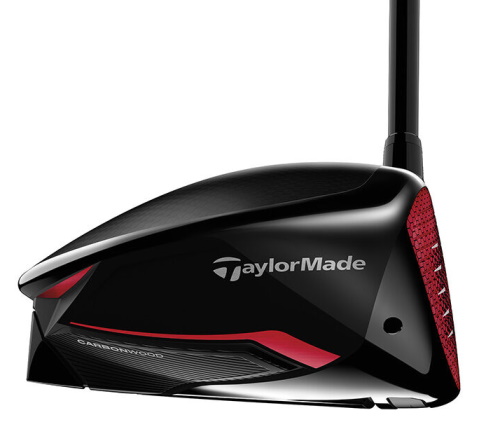
One factor worth considering is how the driver looks. Aesthetic is one thing, but if you play a driver that doesn’t suit your eye, you’ll probably be less likely to make a good swing.
Many mid handicappers prefer a large 460 CC head with an elongated crown and large face. This tends to inspire confidence when set up behind the ball. On the other hand, many mid handicappers prefer a more compact, pear-shaped head that allows for easier shot-shaping.
Related to this are adjustability features, the main ones being movable sole weights and adjustable hosels. These allow you to alter the loft & lie, introduce draw/fade bias, or add stability depending on the position of the weights.
Adjustability is very beneficial in drivers because it gives you the opportunity to dial in a setting that works best for you, even if you might not have been seeing great performance initially. However, it does tend to come at the cost of less forgiveness because of the added weight.
4. Feel
Another factor that can affect how likely you are to make a good swing is feel: specifically, how the driver feels through the swing and how it feels at impact. For some golfers who play by feel, this is imperative.
The weight of the club should feel balanced, but more than that, it should not be too heavy or too light, as both situations will negatively impact your performance.
When it comes to drivers, you ideally want impact to feel solid and like the ball is exploding off the face. This will tend to give you more confidence and increase your speed through the shot. A hollow or “tinny” sound can work against this.
You also need to consider how much the feel degrades as the impact moves away from the sweet spot towards the mis-hit regions. Most mid handicappers want mis-hit feel to be relatively forgiving, but with enough feedback to know out where the ball made contact with the face.
There is a balancing act at play between consistent feel across the face and clarity of mis-hit feedback. Achieving a balance that you’re satisfied with will go a long way.
5. Shaft

The shaft can make or break your success with a driver because of how much it influences swing weight, feel, trajectory and spin.
Graphite shafts have pretty much become the standard for today’s drivers (as opposed to steel shafts) because their increased torque, increased flex, and lighter weight help promote launch and speed.
Having said that, choosing the right shaft is a highly individual matter. These days, manufacturers pair drivers with one or more stock shaft options that tend to appeal to a wide range of golfers, but custom shafts are usually available as well.
The two main things to keep in mind when choosing a shaft are the weight and the flex.
If a shaft is too heavy for you, it will likely result in less control, less club head speed, and an excessively low launch. If a shaft is too light for you, it can result in excessively high launch and spin as well as a lack of precise contact with possible deceleration in the downswing.
The shaft flex that suits you is generally dependent on your swing speed, with lower swing speeds calling for more flex and higher swing speeds calling for less flex. Here’s a guideline:
| Driver Swing Speed | Suggested Shaft Flex |
|---|---|
| Greater than 105 mph | Extra Stiff |
| 96-105 mph | Stiff |
| 84-95 mph | Regular |
| Less than 84 mph | Senior or Ladies |
Playing a flex that doesn’t match your swing speed can result in sub-optimal ball flights. But if you’re in doubt, it’s always better to err on the side of more flexibility.
6. Price

Drivers are pretty expensive these days, and not everyone can afford ones that cost $600 or more. Fortunately, there are options that cost well below this amount.
As a general rule, the older the driver model, the better the deals you can find on it. And it’s not at all uncommon to find that you perform better with a $300 driver than a $600 driver.
You certainly don’t have to get a current-season driver. But the problem is that as time passes, availability of a particular model gets more limited, and eventually, you lose the ability to order it custom. At that point, you may only be able to get it used. In general, we don’t recommend drivers that are more than three seasons old.
In this guide, we have included driver models that span a range of different prices and brands. But the great thing is that there are ways to reduce both the final cost and risk of the purchase.
For example, one of our top recommended online golf equipment stores, Global Golf, offers club trade-ins as well as a program called Utry that lets you try a driver before you buy it. There has never been this much allowance for finding your ideal clubs, and you should take advantage.
Conclusion
A reliable, quality driver can be a huge boon to a golfer’s toolkit. Finding a model that does the job you want it to do as a mid handicapper is certainly possible with some research.
Mid handicap golfers can play any driver successfully, but they tend to seek out game improvement drivers or drivers with both GI and better-player traits. This might mean a good amount of forgiveness, distance, solid feel, or a certain degree of workability.
The best way to find a driver that you do really well with is to simply try it. Buying it off-the-rack is fine, but if possible, we recommend a fitting so that you understand what the your best configuration is.
Each of the driver models reviewed above deliver exceptional performance. We’ve given you the information you need to make a decision; now it’s up to you to go the rest of the way.
It is highly recommended to read consumer and professional reviews to acquire some useful insights as to how driver models actually perform. This will help you a lot in the decision-making process.
Thanks for reading this guide. Which drivers are you interested in as a mid handicapper? Do you have any questions? Feel free to leave a comment down below.

